In pictures: Philippines struggle for survival
- Published
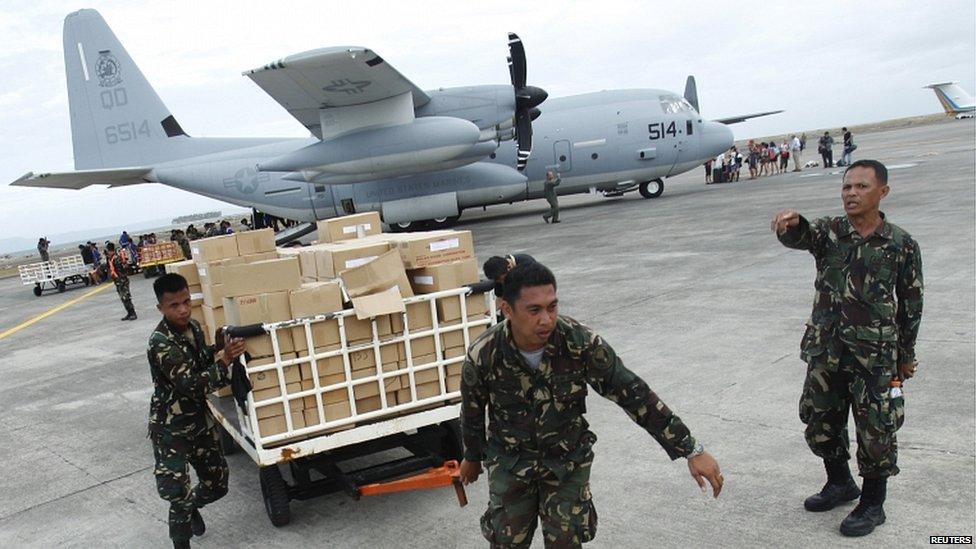
Relief efforts to deal with the humanitarian disaster in the Philippines are being stepped up to try to reach the hundreds of thousands of people in desperate need of food, water and shelter.
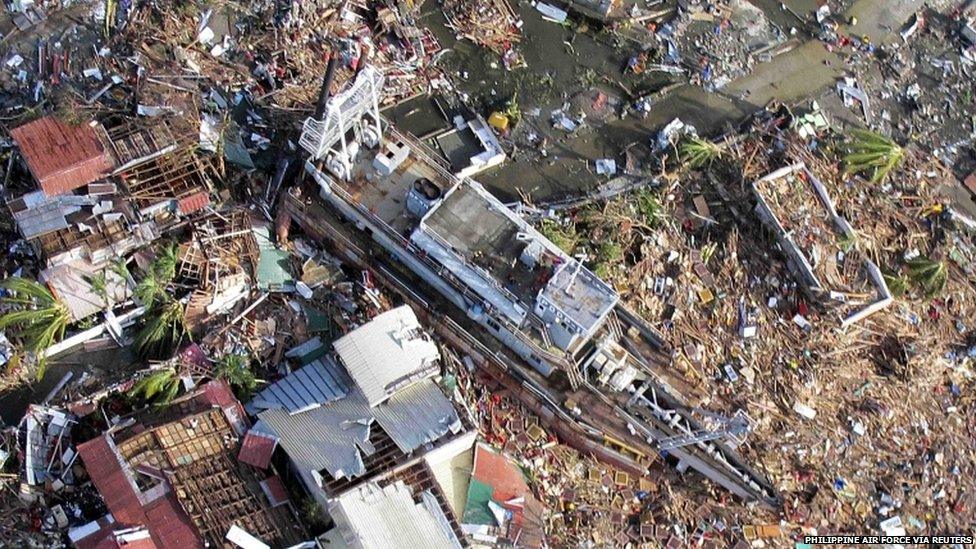
One of the most powerful storms on record to make landfall, Haiyan - named "Yolanda" in the Philippines - struck on Friday.
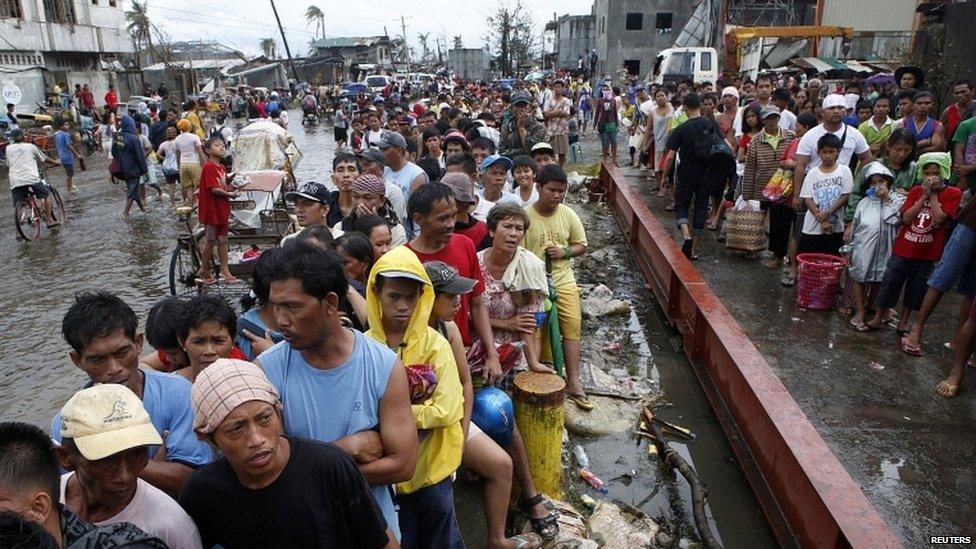
Tacloban, a city of about 220,000 people on Leyte island, bore the full force of the winds and the tsunami-like storm surges.
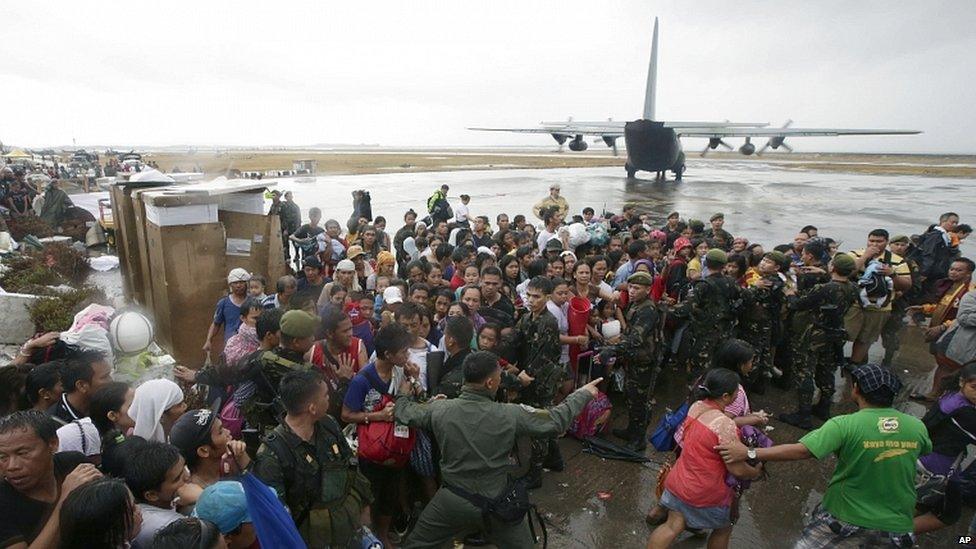
Two C-130 military transport planes arrived in Tacloban early on Tuesday to evacuate survivors. Of the thousands waiting, only a few hundred made it aboard.
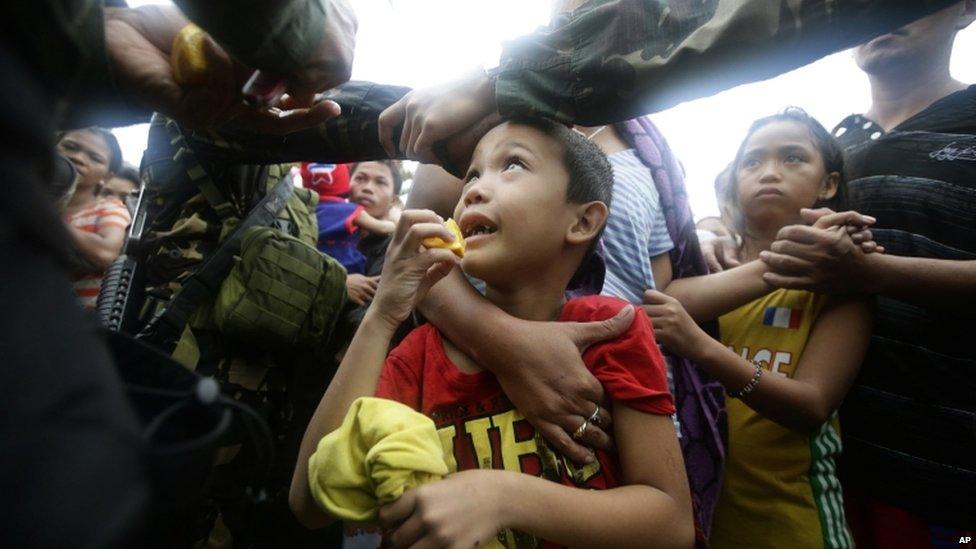
So far, only a small amount of assistance has arrived and the needs of those affected by the typhoon are growing ever more urgent.
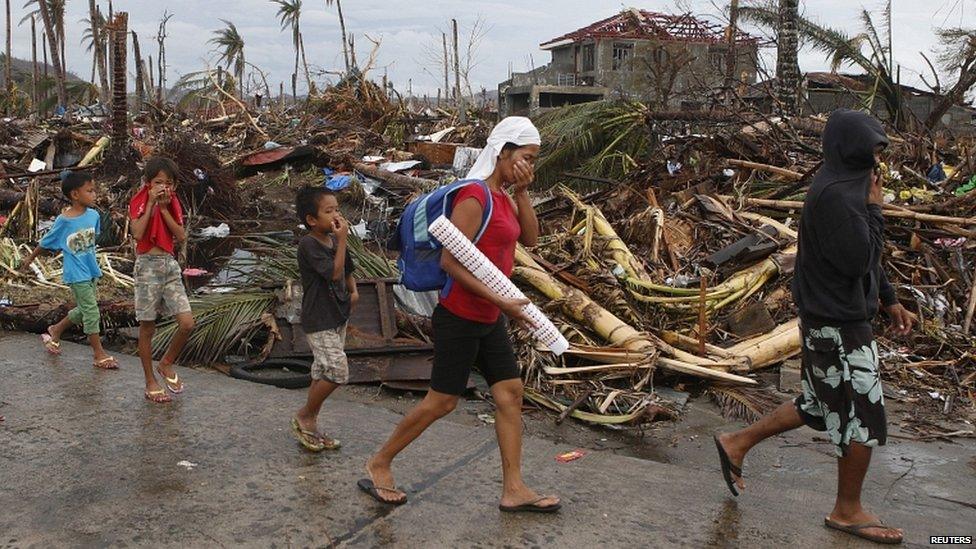
Coastal roads going to Palo town from Tacloban have been destroyed. The stench of corpses buried under the debris pervades the air.
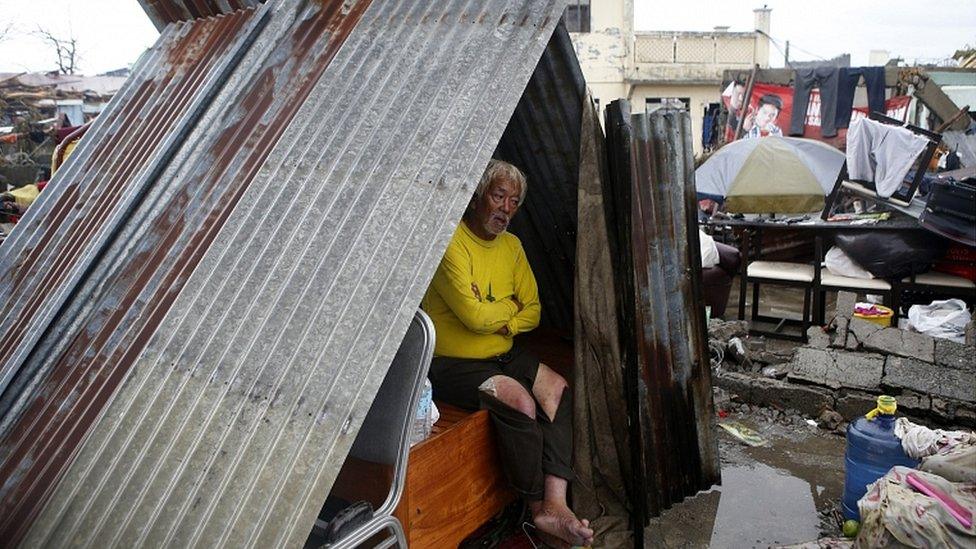
Many survivors spent the night sheltering from pouring rain wherever they could - in the ruins of destroyed houses, or makeshift shelters.
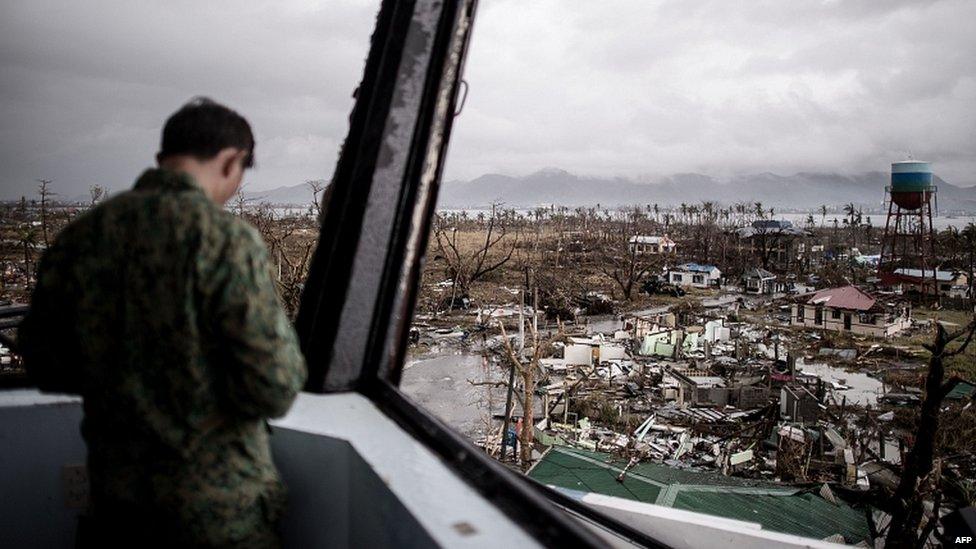
The international community is stepping up its aid efforts. The United Nations is releasing $25m (£15m) in emergency funds and US and British naval vessels are en route to the Philippines.